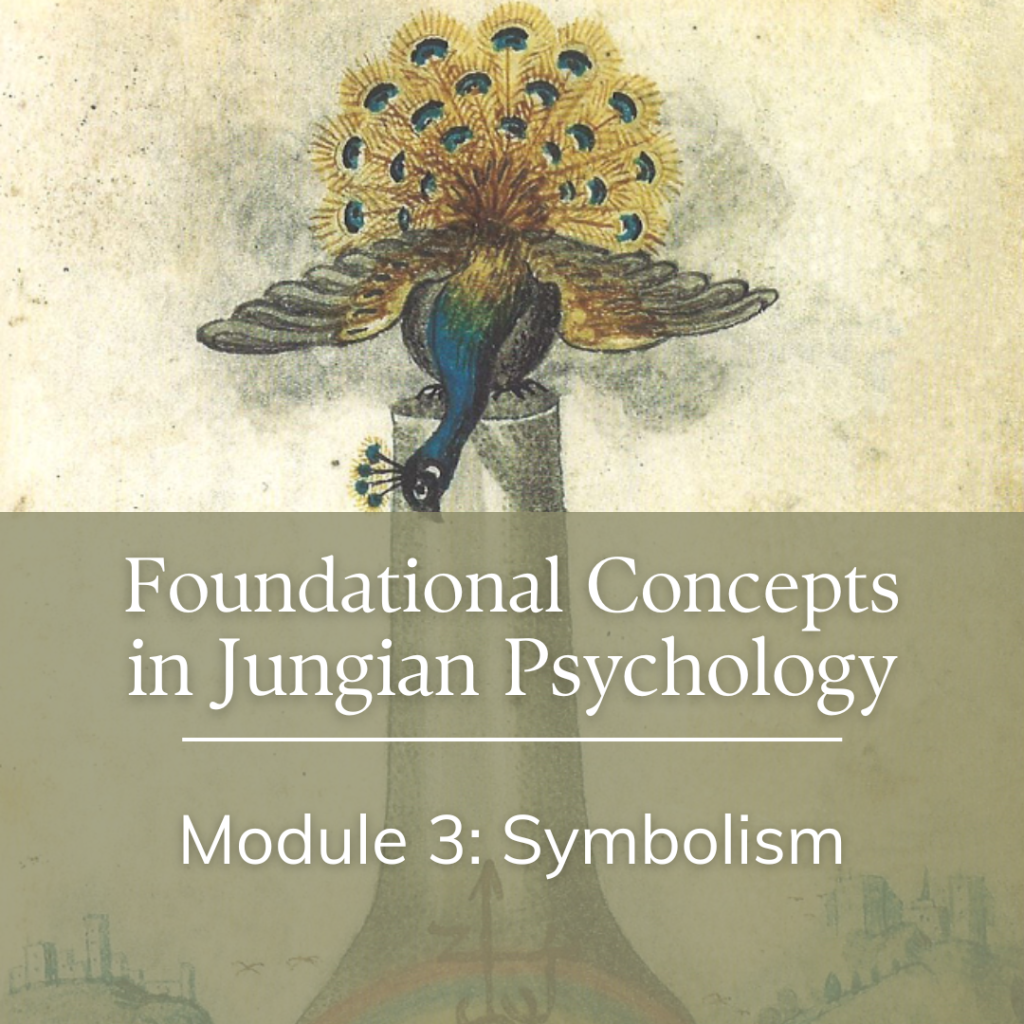Module Three
Symbolism
Presented by Renee Ramsden and Ursula Ulmer

Description
One way to try to understand the unconscious is through the use of symbols. This symbolic approach opens us to a wealth of interpretations, a kind of language of dreams, often revealing to us something previously unknown. Interpreting a dream literally tends to flatten it and make it sterile. In order to become fluent in symbolic language, we look at fairy tales, dreams and active imagination.
Seminar Dates
- April 13 – Dreams, Mythology and Individuation
- April 20 – Active Imagination
- May 4 – Fairy Tale Interpretation
- May 11 – Group Discussion and Fairy Tale Interpretation
Seminar Content
April 13 – The Emerald Tablet as a symbol of Jung’s main concepts and how these manifest in a dream series, presented by Renee Ramsden
The language of the psyche is symbol. The Emerald Tablet is a symbolic representation of the psyche as found in alchemical literature, which offers a summary of Jung’s main concepts, such as Logos, Eros and Self. This presentation will offer a special focus on the mother archetype, followed by a dream series which will illustrate the tracking of the individuation process, through introducing the dynamic relationship between inner figures: representatives of father, mother and ego complexes.
April 20 – Active Imagination, presented by Renee Ramsden
Introduction to active imagination, followed by a series of mandala drawings published in a book by David Rosen, Soul Circles. This series offers an illustration of active imagination in action.
May 4 – Fairy Tales, presented by Ursula Ulmer
Presentation of a Fairy Tale and an approach to interpretation considering standpoint, symbolism, archetypal pattern, human dilemma and potential resolution.
May 11 – Discussion Session
The group will be sent a fairy tale in advance which they will be asked to discuss in small groups, and then share their interpretation with the whole group.
Module Reading List
Required Reading:
- Introduction Chapter of Encountering Jung on Active Imagination by Joan Chodorow (1997, Princeton University Press).
- Graves, R. (1955) The Greek Myths I. Penguin Books. Artemis’s Nature and Deeds, Chapter 22, p. 83 – 86
- Huffington, A. and Gilot, F. (1993) The gods of Greece. Atlantic Monthly Press. Chapter 3, Artemis, p. 53 – 59
- Neumann, E. (1955) The Great Mother: An analysis of the Archetype. Princeton University Press. Chapter One, p. 3 – 17, and chapter six, p. 64 – 74
- Von Franz, M-L. (1996) Interpretation of Fairy Tales. Shambala
Recommended Reading:
- Lüthi, M. (1986) The European Folktale: Form and Nature. Bloomington. Indiana University Press
- Rosen, D. and Jensen, J. (2020) Soul Circles: Mandalas and Meaning. Resource Publications.
- Whitmont, E. and Brinton-Perera, S. (1989) Dreams: A Portal to the Source. Routledge
- Additional books by Marie-Louise von Franz which you may find interesting to read: The Shadow and Evil in Fairy Tales; Creation Myths; The Feminine in Fairy Tales; and Individuation in Fairy Tales.
-
Module Presenters
Renee Ramsden is a clinical psychologist and a Jungian analyst working in private practice in Wynberg, Cape Town, for 30 years. She is a founder member of the Southern African Association for Jungian Analysts (SAAJA) and a training analyst. She specializes in dream-analysis and has been studying alchemy and psychology as presented by C.G. Jung for 25 years. She has a longstanding interest in ancient goddess cultures and their relevance for the feminine in our current world.
Ursula Ulmer is a Jungian analyst in private practice in Zurich, Switzerland. She is a training analyst and supervisor at ISAP (International School of Analytical Psychology) where she teaches on the topics of Fairy Tale Interpretation, Cultural Complexes and Ethics. She lived in Cape Town from 2000 to 2008.
[Image Credit: https://www.alchemywebsite.com/Emblems_manuscripts_Ulrich_Ruosch.html ]
